Data has become one of the most critical assets in today’s business landscape. Whether it’s customer information, financial data, or personally identifiable information (PII), protecting this data is essential. While companies often focus their efforts on defending against external cyber threats, internal access to sensitive data is an equally important concern. Unmanaged or excessive internal access—due to misconfiguration, human mistakes, or malicious behavior—can lead to significant consequences, including data breaches, compliance violations, and erosion of customer trust.
Let’s take a closer look at how internal access can present a hidden security risk, and practical strategies businesses can use to mitigate these threats.
The Dangers of Internal Data Access
1. Human Error: Even well-intentioned employees can accidentally compromise sensitive data. Common missteps include sending emails with confidential information to the wrong recipient, mishandling files, or using unauthorized cloud apps for data storage. These mistakes can lead to data leaks and breaches.
2. Privilege Misuse: Employees are sometimes given more access privileges than necessary for their roles. This can result in unauthorized access to critical data, such as financial reports or customer records, which may be altered or misused—either intentionally or unintentionally.
3. Insider Threats: While relatively rare, insiders with malicious intent can cause major damage. Disgruntled employees or those seeking personal gain may steal, alter, or delete sensitive data. Detecting these threats is challenging and often occurs only after data has already been compromised.
4. Third-Party Access: Vendors and contractors frequently require limited access to company data in order to perform their work. Without stringent security controls, these external parties may inadvertently become access points for data exposure, especially if their own cybersecurity measures are weak.
How to Reduce Internal Access Risks
Organizations can take proactive measures to significantly reduce the risks associated with internal access:
1. Role-Based Access Control (RBAC): Provide employees access only to the data essential for their specific job roles. Avoid giving administrative or elevated access to users who don’t need it. Conduct regular audits to update access permissions as people move between roles.
2. Principle of Least Privilege (PoLP): Limit user access to the bare minimum required for task completion. Refrain from assigning all-encompassing access rights unless necessary. Periodically review these permissions, especially after role changes or employee offboarding.
3. Activity Monitoring and Logging: Keep a close eye on user activities for suspicious behavior, such as access during off-hours, mass downloads, or attempts to access restricted files. Real-time monitoring and alerts help identify and respond to potential breaches quickly.
4. Data Loss Prevention (DLP) Tools: These tools monitor for and prevent the unauthorized transfer or sharing of sensitive information. DLP systems can block certain types of emails, detect large or suspicious data uploads, and halt behaviors suggesting potential data theft.
5. Employee Training: Frequent cybersecurity training helps employees recognize phishing attempts, use safe data handling practices, and understand company protocols. Educated employees are better equipped to prevent accidental data disclosures.
6. Secure Third-Party Access: Before granting access to vendors or contractors, conduct careful vetting. Contracts should detail clear cybersecurity expectations, including usage of secure VPNs and adherence to your company’s security policies.
7. Strong Passwords and Multi-Factor Authentication (MFA): Enforce the use of strong, complex passwords and implement MFA for system logins. This adds a second layer of protection, making it harder for unauthorized users to access sensitive environments.
8. Adopt a Zero-Trust Approach: A zero-trust security model assumes that no user or device—internal or external—should be automatically trusted. This requires rigorous identity verification and constant monitoring of all network traffic.
9. Data Air-Gapping: For highly sensitive data, air gapping—physically isolating data or systems from others in the network—can prevent external threats from accessing crucial information.
Protecting Your Data with Cytranet
While internal data access is integral to daily business functions, it should never be taken lightly. Without strong governance and modern safeguards, internal access can open the door to costly data compromises.
That’s why many organizations choose to partner with experienced managed service providers like Cytranet. At Cytranet, we go beyond conventional IT support by delivering proactive cybersecurity strategies tailored to safeguard your internal systems. Our team continuously monitors your environment, detects threats early, and implements tailored defenses to protect your operations, reputation, and compliance posture.
Safeguarding your data starts with understanding internal risks—and taking action. Connect with Cytranet today to learn how we can help you manage these risks and ensure your data remains protected in a constantly evolving digital landscape.


